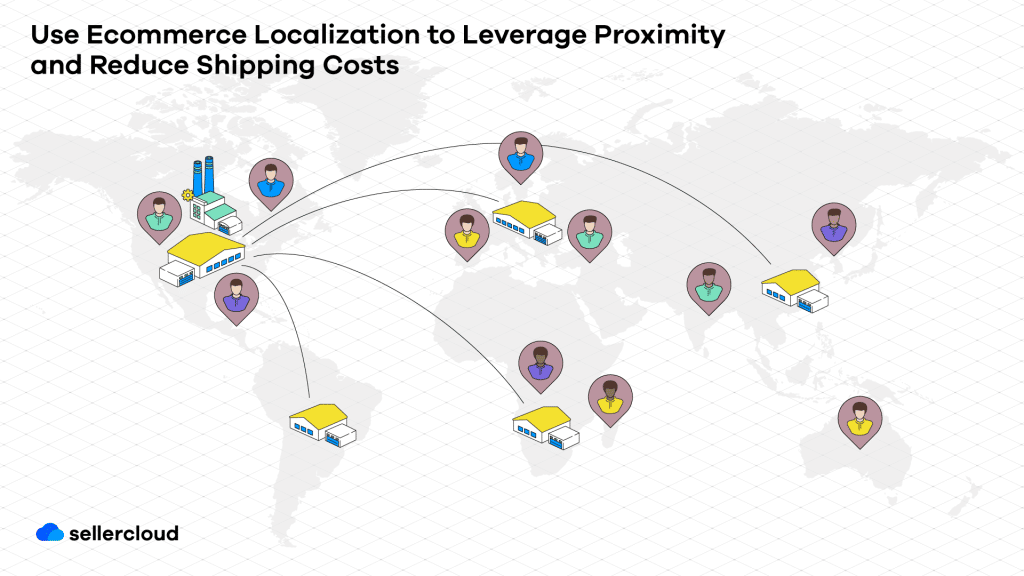
It is no secret that price volatility has had an impact on nearly every aspect of ecommerce. While some increases in both upstream and downstream supply chain costs can be passed on to the consumer as part of an active repricing strategy, minimizing costs is crucial to optimizing your profit margins and protecting your bottom line.
One of the most turbulent and expensive components of online retail continues to be shipping.
What Impacts Shipping Rate Inflation?
There are several factors at play in the current economic climate:
Increases in Fuel Costs
Prices at the pump have largely eased since their summer spike, but they led to shipping and fulfillment cost increases and surcharges. Many of these fees and rate hikes remain in effect.
Increased Labor Costs
An incredibly low unemployment rate has made it more costly to attract and retain a workforce across many industries. The shipping industry has not been immune.
Port Congestion and Supply Chain Strains
The flow of goods into the country ground to a near halt at times throughout the pandemic. Port congestion remains a serious issue (although not nearly as serious as it was at its peak). However, many of the controlling interests in the shipping industry have kept freight prices high and are showing a reluctance to recalibrate according to improving conditions.
Regardless of the cause, acquiring and distributing inventory remains more costly now than it was pre-pandemic. These macro-level inflationary issues are beyond the scope of what you or your business can impact.
Making matters worse, these conditions are being felt worldwide, not just domestically. The grand scale of the economic factors in play will need to be resolved through some combination of market and/or federal intervention.
How Does Shipping Rate Inflation Impact Sellers?
Nevertheless, these increasing logistics expenses create a multi-faceted problem for sellers:
Customers Expect Fast and Free Shipping
Customers who have become accustomed to fast and free shipping are reluctant to pay a premium for fulfillment. The sticker shock of even a modest shipping cost increase at checkout can lead to an increase in abandoned carts and missed opportunities to convert sales. The reality is that customers don’t care that your shipping provider(s) increased your rates.
Shipping Price Increases
Shipping price increases can cut into already narrow margins, making certain products and markets untenable. Particularly in cases where Buy Box competition is fierce and/or margins are already paper-thin, even a slight increase in shipping costs can undercut your competitiveness and even eliminate your potential to eke out a profit in certain cases.
How Can Sellers Counter Shipping Rate Inflation? 4 Ways
While it may seem that there are no options to fight against shipping cost increases and their effects (after all, you need to get your products to customers somehow), there are some strategies ecommerce businesses can employ to help offset and counteract the ability of shipping rate inflation to harm their bottom line.
1. Third-Party Logistics (3PL) Partnerships Can Lead to Cheaper Overall Shipping Costs
As with most things, bulk costs are cheaper than paying piecemeal. Shipping is no different. One of the major advantages of using 3PL services like FBA, WFS, and others is that you avoid the expenses associated with picking, packing, and shipping out each order individually.
Instead, you ship your inventory in bulk to fulfillment and distribution facilities where a 3PL partner handles order fulfillment from there. These less frequent bulk shipments replace your direct-to-customer shipping costs with bulk shipping rates that almost always result in a significantly lower per-item shipping cost.
While utilizing a 3PL comes with additional expenses you would not normally encounter when running fulfillment through your own warehouse(s), in times like these, there is an added incentive to crunch the numbers and see how those added costs compare to your current self-fulfillment shipping costs.
In some cases, the cost savings involved with not having to ship every order through your shipping partners, relying on your own logistics team, and/or storing the bulk of your own inventory may offset those added costs. Moreover, some 3PL options, like Amazon’s Warehousing and Distribution (AWD), go further and allow a direct link between your upstream and downstream supply chains, potentially saving your ecommerce business even more.

2. Negotiating With Shipping Partners Can Lead to More Favorable Rates
Just because shipping rates are high doesn’t mean that sellers are totally helpless. There is plenty of competition between fulfillment carriers, and, in some cases, you can use this to your advantage. While it is important to remain flexible in your shipping options, some carriers are willing to establish relationships with sellers (particularly high-volume sellers) that can reduce shipping prices.
Identify the types and amounts of shipping services your business requires, and see what rates a carrier will offer you to service those needs. Many shipping companies will likely start with a boilerplate offer, but being deliberate and informed about exactly what you are looking for can help you avoid paying for services that you don’t need or accepting unfavorable rates and terms.
Don’t just settle for the first offer, either. Pitting carriers against each other can be a great way to drive down shipping prices even further. In some cases, multiple businesses can opt to form consolidated shipping partnerships to work together and take advantage of cheaper, whole-truck/whole-container rates offered by commercial shipping companies instead of traditional parcel shipping alternatives.
Ultimately, the combination of savvy and flexibility can often be a successful way to drive down shipping costs.

3. Take Advantage of Packing Optimization Strategies
Most shipping costs are calculated according to dimensional weight—the combination of weight and volume. If you can reduce one or both of these factors, your shipping costs will inevitably decrease. Even a nominal reduction in packaging weight or size can lead to big savings when multiplied across a volume of fulfilled orders.
Some of the best ways to do so include:
- Matching products to carton sizes that minimize empty space.
- Choosing efficient, lightweight packing materials to protect your products.
- Eliminate waste in your merchandise packaging decisions.
- Use the right tools to accurately measure and weigh your packages.
While these moves won’t do anything to affect the rates shipping providers charge to move your packages (or even 3PL providers to store and move your inventory), they can make sure that you are paying for the least amount of dimensional weight possible.

4. Use Ecommerce Localization to Leverage Proximity and Reduce Shipping Costs
After dimensional weight, the other major factor that shipping companies use to calculate your costs is the distance a package has to travel. As such, reducing the distance between your products and your customers reduces your pre-order shipping costs.
Ecommerce sellers can take advantage of the concepts of fulfillment localization, nearshoring, and reshoring as cost-saving measures. To do so, you need to examine your sales and marketplace data and identify patterns in where your customers are located.
If there is an opportunity to establish a warehouse or enlist a 3PL partner nearby, you can potentially drive shipping costs down, reduce fulfillment speed, and improve customer satisfaction in the process. For international ecommerce sellers, it is worth considering establishing 3PL partnerships and/or a warehousing presence in the countries and continents where you do business.
Shipping merchandise in bulk to these distribution centers can result in significant savings compared to individual, international parcel shipments on a per-order basis. Of course, none of these solutions are themselves immune to inflation’s reach. In times of global inflation, nearly every industry and service is impacted somehow. While this can make managing one’s own costs challenging at times, the effort is almost always worth it.

Descartes Sellercloud features over 350 integrations with industry leaders in shipping, logistics, fulfillment, repricing, and more. Our omnichannel growth platform gives you all the tools, support, and versatility you need to take your ecommerce sales to the next level—no matter the economic climate.
Contact us directly for a free demo and see how we can help you start scaling your business today.




